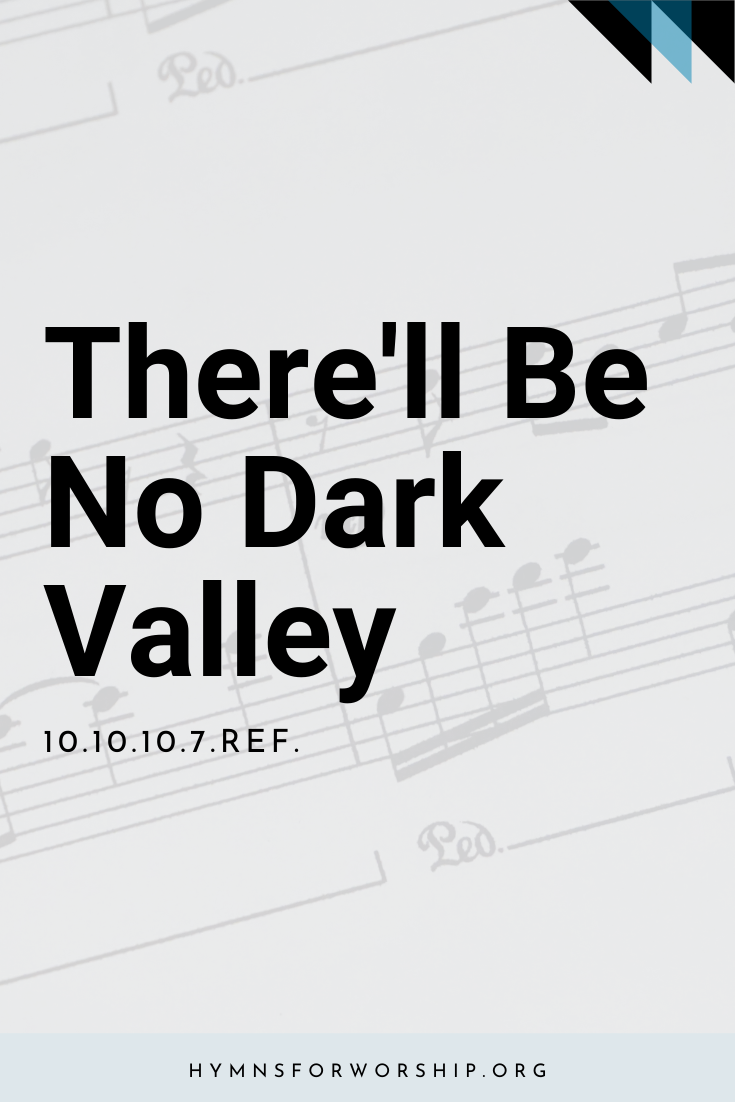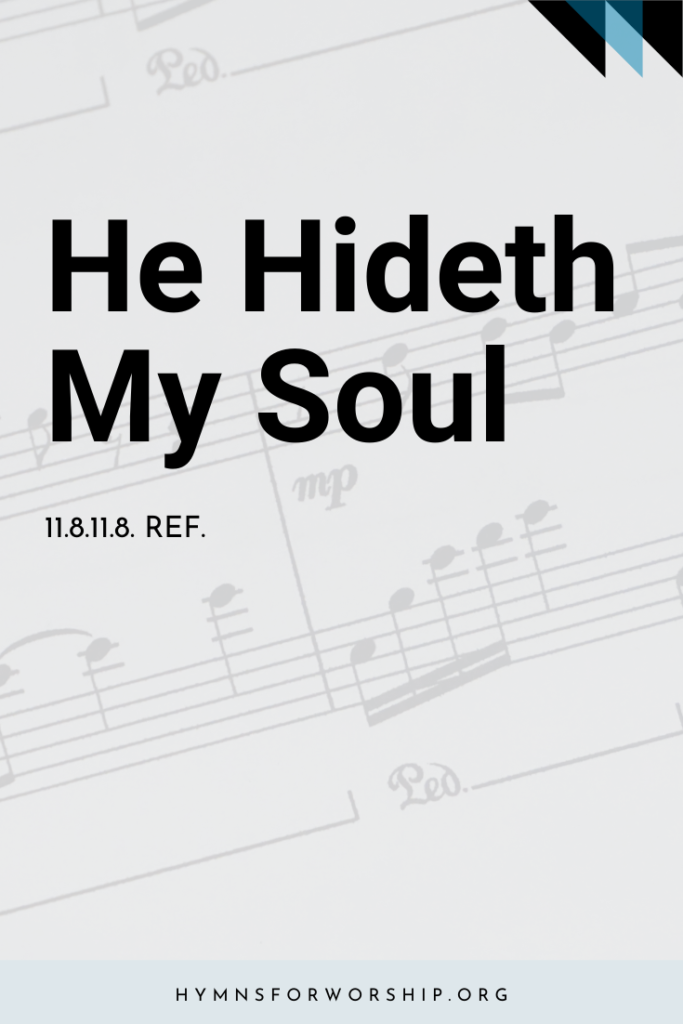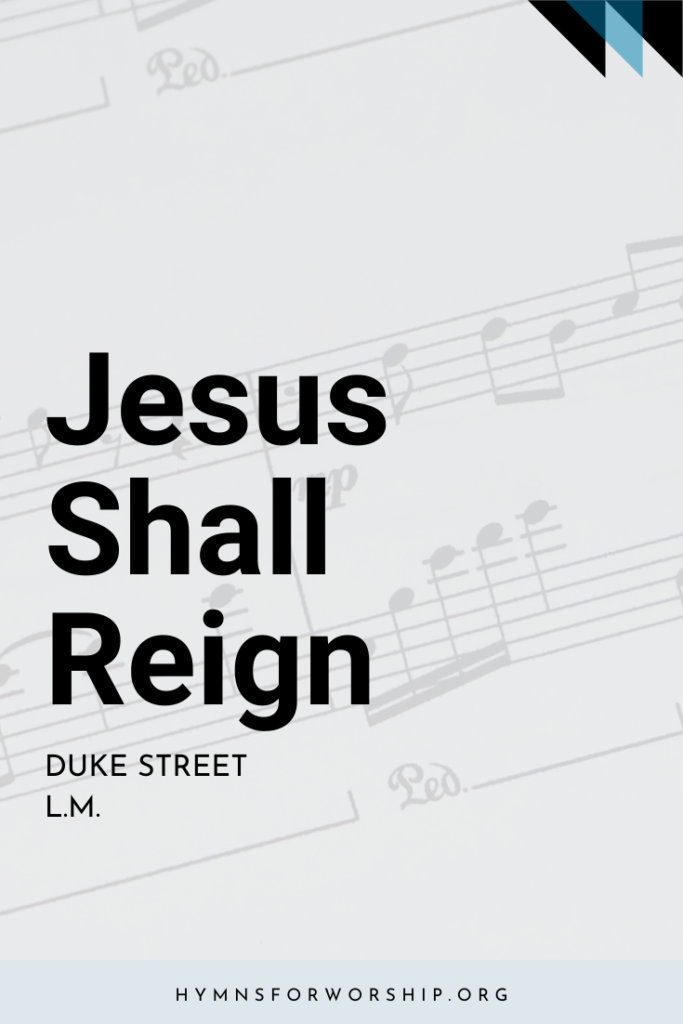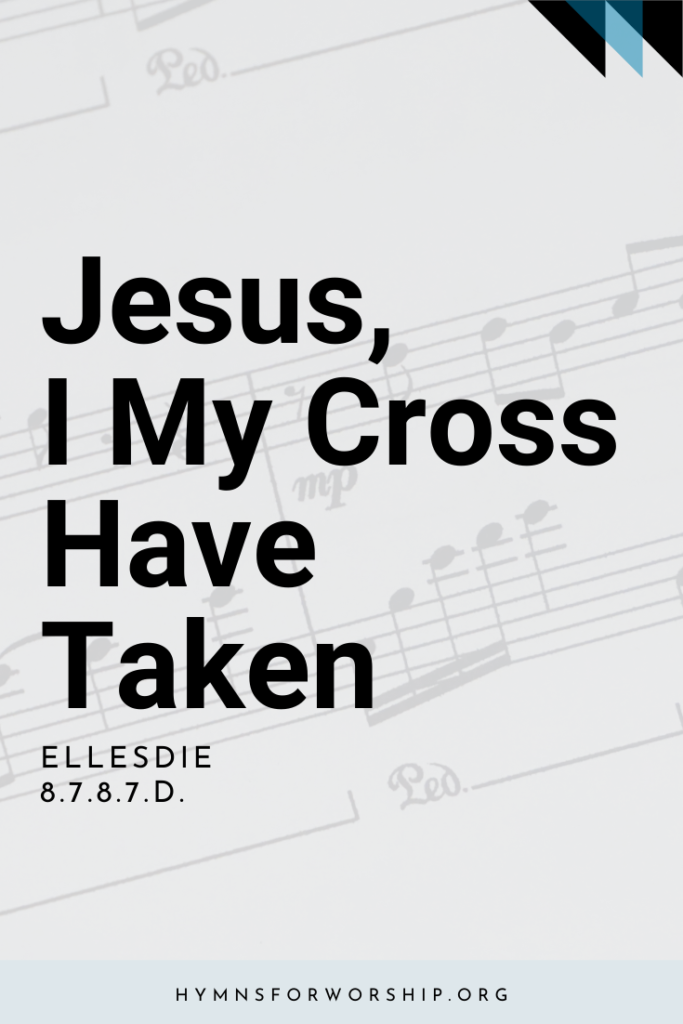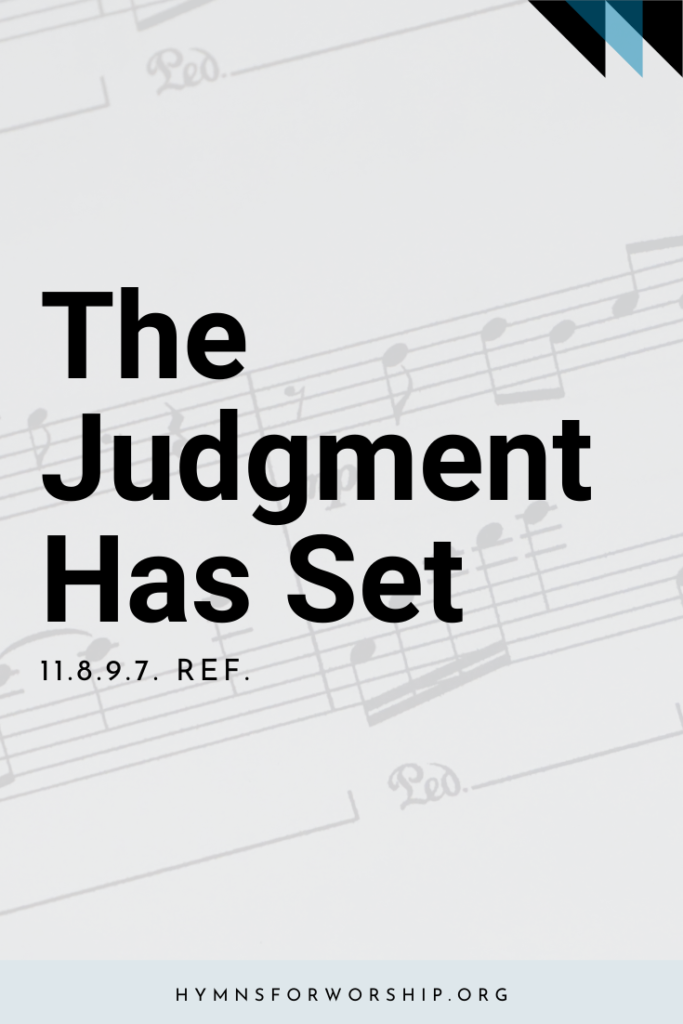JESUS CHRIST >> SECOND ADVENT
SDAH 208
There’ll be no dark valleys when Jesus comes,
There’ll be no dark valleys when Jesus comes,
There’ll be no dark valleys when Jesus comes,
To gather His loved ones home.
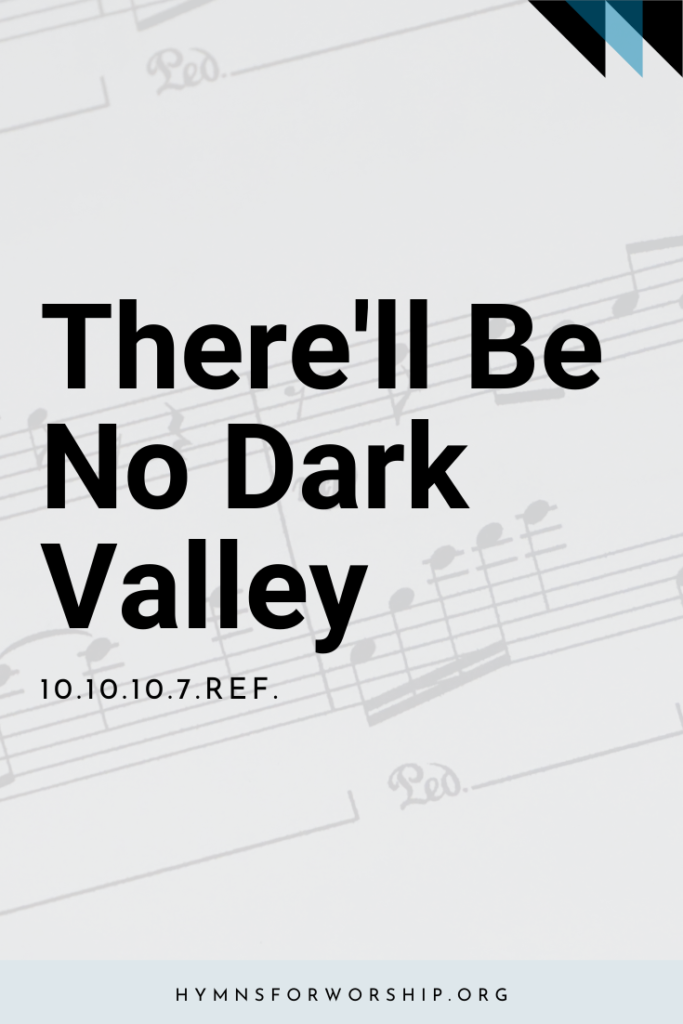

Text
1
There’ll be no dark valleys when Jesus comes,
There’ll be no dark valleys when Jesus comes,
There’ll be no dark valleys when Jesus comes,
To gather His loved ones home.
Refrain
To gather His loved ones home,
To gather His loved ones home.
There’ll be no dark valleys when Jesus comes,
To gather His loved ones home.
2
There’ll be no more sorrow when Jesus comes,
There’ll be no more sorrow when Jesus comes,
There’ll be a happy tomorrow when Jesus comes,
To gather His loved ones home.
3
There’ll be songs of greeting when Jesus comes,
There’ll be songs of greeting when Jesus comes,
There’ll be songs of greeting when Jesus comes,
To gather His loved ones home.

Hymn Info
Biblical Reference
(a) Ps 23:4 (b) Rev 21:4 (r) Isa 66:18
Author
William O. Cushing (1823-1902)
Metrical Number
10.10.10.7.Ref.
Composer
Ira D. Sankey (1840-1908)
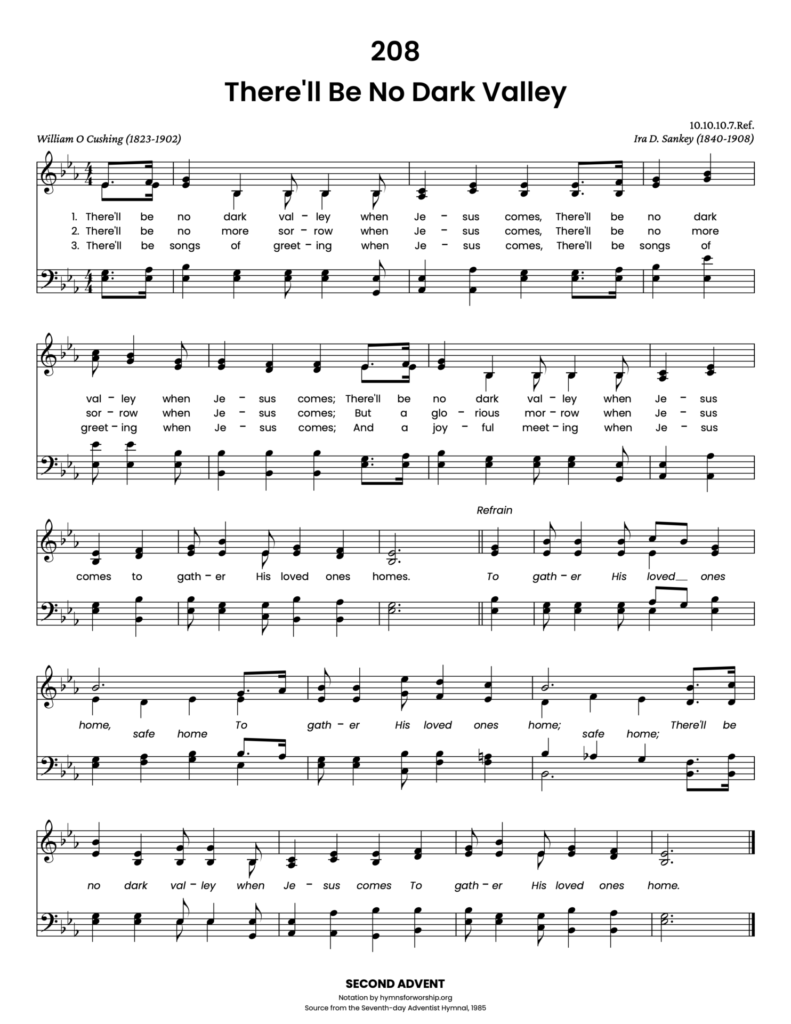
Get the hymn sheet in other keys here
Recommended Reading
This rebellion was described to be a most “violent anti-foreign, anti-colonial and anti-Christian uprising,” in that a total of 136 Protestant missionaries and 53 children, 47 Catholic priests and nuns. 30,000 Chinese Catholics, 2,000 Chinese Protestants, and 200 to 400 of the 700 Russian Orthodox Christians in Beijing were estimated to have been killed.
Many were gutted, brained, ravished, seized or beaten to death. Yet reports were given that while these Chinese Christians were under persecution, many of them sang hymns and offered prayers to God. Even the children were found faithful in that it was described, “during the scream of deadly bullets, and the roar of burning buildings, the voices of the Junior Christian Endeavour Society were heard singing, ”There’ll be no dark valley when Jesus comes.”

Christians are Christ’s jewels. They are to shine brightly for Him, shedding forth the light of His loveliness. Their luster depends on the polishing they receive. They may choose to be polished or to remain unpolished. But everyone who is pronounced worthy of a place in the Lord’s temple must submit to the polishing process. Without the polishing that the Lord gives they can reflect no more light than a common pebble.

Notes
Get to know the hymns a little deeper with the SDA Hymnal Companion. Use our song leader’s notes to engage your congregation in singing with understanding. Even better, involve kids in learning this hymn with our homeschooling materials.
Our lesson tells us that Jesus thinks and acts in harmony with the Lord. When the time comes for the second coming of Jesus, we have an assurance that there will be no dark valley there. (Lesson 5, 1st Quarter 2021 -Wednesday, Root and Branch in One, 1/27/2021)
William Orcutt Crushing was born December 31, 1823, to Unitarian parents at Hingham Center, Massachusetts. At age 18 he made a decision to prepare for the ministry. After completing his education, he served as pastor of several churches in the state of New York, beloved by his flocks as a gentle, sweet-spirited. Generous almost to a fault, he once gave $1,000, which was all he had, to a blind girl to help her get an education.
After the death of his wife, who had been very ill for many years, he suffered a stroke and was forced to retire from active ministry. But he offered this prayer, “Lord, still give me something to do for Thee!” His prayer was answered, for he was inspired to write more than 300 hymn and gospel song texts that were set to music by George F. Root, Robert Lowry Hubert P. Main, Ira D. Sankey, and other distinguished composers.in addition to the three listed below, he was the author of the words of “Ring the Bells of Heaven” and Beautiful Valley of Eden.”
The last 13 years of his life were spent if the hospitable home of Rev. and Mrs. E.E. Curtis, Lisbon Center, New York. While there he joined the Wesleyan Methodist Church. He died October 19, 1902.
There more of his texts are in SDAH: No. 218 “When He Cometh”; No. 525, “Hiding in Thee”; and No. 529, “Under His Wings.”
Ira D. Sankey (1840-1908; see Biographies) said that he used only the first line Crushing’s poem, “There’ll be no dark valley when Jesus comes,” as a basis for this tune. With its repetition of one idea, and syncopated rhythm, the music is very much akin to the spiritual and folk song, and a joy to sing. In Sankey’s My Life and the Story of the Gospel Hymns, he tells this story: “One night during the Boxer revolt, when the Chinese had set fire to many buildings, and it seemed as though all the missionaries and native Christians in a besieged city would be destroyed, the children belonging to the Junior Christian Endeavor society held a meeting in a chapel. While the cracklings of the flames, the sharp report of the Chinese guns, and the cries of men and women running to and fro were rending the air, these little disciples of Jesus were singing, ‘There’ll be no dark valley when Jesus comes.’”
This is a hymn that the SDAH Committee “brought back” from the much-loved book, Christ in the Song, 1908, compiled and published by F. E. Company. It appeared in Sankey’s Sacred Songs and Solos, 1,200 pieces, 1903, with Psalm 23:4 at the head: “Yea though I walk through the valley…”
-from Companion to the Seventh-day Adventist Hymnal by Wayne Hooper and Edward E. White

